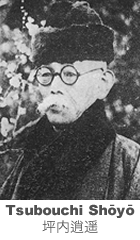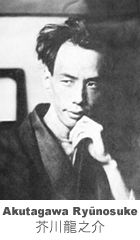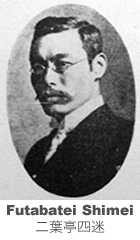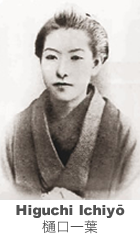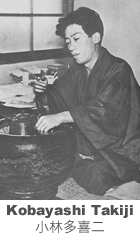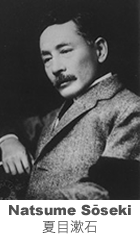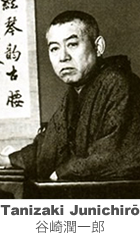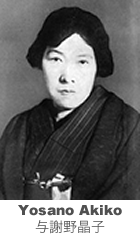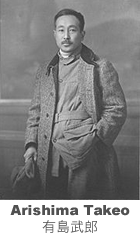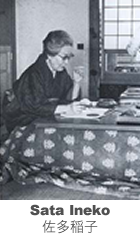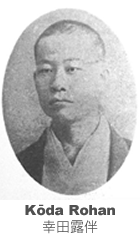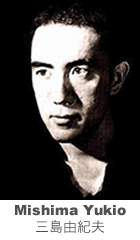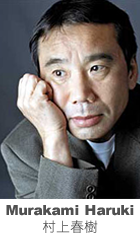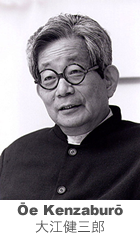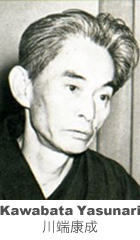Introduction
Kyoko Kurita
Professor of Japanese
Department of Asian Languages & Literatures
Pomona College
I. Introduction
Following the Y2K scare, which was the first technological issue in human history that simultaneously affected the whole world, the internet revolution began to synchronize people’s thinking globally. It brought about more significant changes than I had expected even to my life as a teacher of (statistically speaking) a “minor” language and literature. Although the area of my academic interest remains unchanged, the way I work on my projects has changed; and the way I teach has evolved even more substantially. The internet has even altered my own perception of myself as a teacher, and as a Japanese teaching my national language and literature in the U.S.
As a new chapter in American history is about to open with the inauguration of the 44th president, I feel I am a part of a community, small and large, that has witnessed rapid changes not only technologically, but politically and economically during the past decade. There are still some who identify me as a minority—a colored female who speaks with a foreign accent, a vertically challenged “other” who does not share the fundamental American experience and mores, even those of the American “minorities.” But I believe that the term “minority” lost its real currency some time ago (especially in California!), and will be lost forever when Barack Obama is sworn in. However, there is one thing that makes me feel that I am indeed a minority of the Pomona College community. That is the subject that I teach.
The short-lived era when Japan was considered an economically dominant nation in the world (“Japan As Number One”) has passed. More importantly, we now live in a world where the English language rules international communication as the universal language. This is the general case among Asian nations. More and more Asian scholars from different countries communicate with each other in English, rather than in some Asian language. There is no urgent need for American students to learn Japanese, which is so different from Indo-European languages, and which has the most complex writing system even among Asian languages. A variety of Japanese cultural artifacts have become known to many Americans, and only when something is introduced to the world by the American media does it become recognized as noteworthy, even in Japan.
What is the significance, then, of teaching Japanese and Japanese literature in the U.S., when the world has become one global village in which everyone communicates in English? Why should anyone teach (or learn) such a “minor” language?
Such questions began to loom larger and larger as a central issue in my life during the past decade—a new set of challenges in addition to those I faced when I started teaching at Pomona College. I believe that, in one way or another, in my teaching and in my research, those challenges have always motivated me. My statement below will outline my efforts to make a difference.
II. Teaching
Teaching language
Overall, I am in charge of the advanced-level courses. The naturally lower enrollment in upper level courses means that I am the only member of the Japanese Section who never teaches multiple sections of one course.
Although the population of Japanese speakers in the world is very small, there are 3 million people in 133 countries who study Japanese at various educational institutions, according to the survey conducted by the Japan Foundation in 2006. (Survey report on Japanese-language education abroad, Tokyo: The Japan Foundation, July 2008.) If we consider that many languages in the world are going extinct every day, Japanese is quite fortunate. Among those 133 countries, Japanese has a chance to be a common language. Students can learn not only about Japan, but about any of those 133 countries using Japanese.
In order to prove this, I decided to experiment with video conferencing. Prof. Jun Shigematsu of Keio University in Japan is one of the pioneers in the use of video conferencing technology in language and cultural education, and with her help, I made video conferences between my students and Keio University students a regular part of my curriculum nine years ago. The first encounter did not work very smoothly: the sound was often interrupted, and every few minutes a cascade of pixels would cross the screen. Now we have an excellent facility both in Alexander Hall and in the ITS building, where we can sit comfortably and hear and see the other party clearly, as if no national boundary or insurmountable distance divides us. Over the years I have expanded my group of video conference partners. Now we communicate not only with Keio University in Japan, but also with Tsinghua University in China, Ghent University in Belgium, and the University of Koeln (Cologne) in Germany. In May 2009, we conducted our first three-way conference with Japan and China.
Teaching literature
The number of students who major in literature has decreased considerably over the past decade, not only in the U. S. but in many countries around the globe, including Japan. Not only college students but the general public have also turned more towards the visual text: they prefer to watch films, animations and videos on YouTube, or to play video games, rather than read literature. And why should anyone care about modern Japanese literature? And what do we expect the students to learn from it when even expert translations are a far cry from what the original works offer?
Despite the dissemination of multiculturalism, it is clear that all literatures need to be translated into English in order to be recognized by the world audience, starting with the Nobel Prize literature award. Intellectuals all over the world need to tap into world issues using sources written in English in order to keep themselves up-to-date. Constant exposure to English sources will inevitably affect their writing. Furthermore, the destiny of literatures written in languages other than English is that whatever works cannot be translated into English will be left behind, and the rest gets absorbed into literatures in English through translation. Through this process, a simulacrum field of Japanese literature, a kind of meta-literature—Japanese literature in translation—was born. Thus, unlike my fellow scholars in Japan, I constantly need to interact with the two layers of Japanese literature simultaneously in order to teach my literature course in English translation. The corpus of Japanese literature in English translation is miniscule compared to the original, and I often encounter errors or insufficiency. Furthermore, when my English has also has its own insufficiencies, I have to make my students participate in the production of more English translation of Japanese literature. (The fourth-year Japanese course combines both language learning and literary analysis. I do not require translations of all the stories, but some translation exercise is a necessary evil.)
Through the medium or obstacle of translation that is available to us, I try to help the students catch a glimpse of what the authors in the modern era have tried to say, and the social and political context in which they lived. What I teach is based on what I have learned from creative and critical works written in both Japanese and English; but I do not promote any particular approach, theory or method other than my own. I consider the primary role of an undergraduate course on literature written originally in a language other than English to be a provider of critical stance towards the world of the English language and the cultures that are built by it. And, since culture is so bound up with language, this applies to language study as well. No matter how keen one’s critical reading may be, as long as one is operating within the culture of English alone, one is oblivious to its own blind spots. And while Japanese culture has penetrated world cultures broadly, the penetration has been fairly superficial. Non-Japanese cultures can be enriched by the deeper understanding that comes from learning the language and literature more thoroughly. Again: not only for its own sake, but for the “space” it provides for critical reflection.
Although the process of translating Japanese literary work into English is so destructive to the original, and I feel a certain amount of distress when I teach it in English, I believe that the writers and scholars of Japanese literature—in Japan as well as in the U.S.—need to consider this a useful tool for honing their creative and critical skills, rather than merely an obstacle, or a standard we are obliged to comply with, or an irrelevant or inferior “double.”
III. Research
There are four main research areas I have worked on during the past decade:
- Histories of the future: futurological works during the 1860s to 1880s and the changes in temporal consciousness in Japan;
- The Cambridge History of Japanese Literature: section covering 1900-1950;
- Literature and art: the relationship between Japanese prints and literature during the latter half of the 19th century;
- Literary translation.
I have also worked on Japanese documentary films with the hope of creating a new course.
I will subdivide this section into four parts to give a brief explanation of the background of each project.
1. Histories of the future
My research interests lie primarily in mid- to late-19th century literature. Japan officially ended the two-century-long era of National Seclusion in 1868, and began to import Western technology and civilization at a dizzying pace. I am fascinated by the burst of literary creativity seen in this period, when the old and the new came into a full-scale clash with one another, and a new direction had to be determined. The authors at the time tried to comprehend the new ideas from the West, and in order to do so, they had to come to a clear understanding of what their own traditions were—not only in contrast to the Chinese traditions that had hitherto governed Japanese high culture, but in contrast to what they were now encountering for the first time. What is particularly interesting to me is the change in the temporal consciousness at the time of multivalent social changes, and how Japanese pictured their future in the process of reconfiguring their sense of temporality.
2. The Cambridge History of Japanese Literature (1900-1950)
Another project that has occupied a large portion of my time the past few years is co-authoring a chapter with Prof. Hideo Kamei (Professor Emeritus of Hokkaido University and President of the Otaru Literary Museum) in the latest edition of the Cambridge History of Japanese Literature (Cambridge University Press; forthcoming).
There have been a number of efforts to establish new perspectives on the history of Japanese literature during the past few decades. This volume also attempts to open up a new horizon, although the way it does so is left up to individual chapter authors. I believe that the period of fifty years that Prof. Kamei and I were assigned is the most problematic one of all, covering (as it does) three wars, starting with the Russo-Japan War of 1904-05. It goes without saying that the military government’s censorship controlled much of what was written and published. And yet there has not been a sufficient discussion of the relationship between the politics and the literary production of this period.
3. Literature & art: late 19th-century prints
During Spring 2004, I audited a course on Japanese prints of the Meiji Period (1868-1912), taught by Bruce Coats at Scripps College. Bruce is an expert on Japanese prints, but I knew more about the Meiji Period in general; so we had a series of very interesting conversations and discussions. This course was in fact a part of his preparation for a two-day conference on Meiji Period prints in September 2006. He was going to open an exhibit of prints by Yoshu Chikanobu at the time of the conference, and he was also putting together a catalog to go with the exhibit. He asked me if I would be interested in contributing an essay on Chikanobu’s prints and the literature of the period. I have always had a fondness for interdisciplinary approaches, and I thought it was a great opportunity to expand my knowledge of the period. Since I was fortunate to receive a Hirsch Grant for the following summer, I studied traditional Japanese print making methods from Prof. Tetsuya Noda at the Tokyo University of the Arts (Tokyo Geijutsu Daigaku), and sought guidance from Prof. Doshin Sato, the University’s specialist on the visual art of the Meiji Period. Upon my return, I wrote “Picturing Women’s Spirit: Chikanobu’s Prints and Meiji Literature” for the catalog, and presented a paper (and a Powerpoint presentation) titled, “Temporality in Chikanobu’s Depictions of Women” at a symposium titled, “Promoting and Resisting Westernization in Meiji Japan,” held at Scripps College in September 2006.
I enjoyed learning the complex, time-consuming print-making process in the traditional way; it deepened my understanding of the factors involved in any interaction between art and literature (specifically, of course, 19th-century Japanese prints). I am truly grateful for the opportunity I had to add another dimension to my understanding of the Meiji Period and to discover the existence of a relatively unknown dialog between the literature and art of the period.
4. Literary translation
I co-translated a well-known novella titled Furyubutsu, written by Koda Rohan in 1889, and it is included in The Columbia Anthology of Modern Japanese Literature: From Restoration to Occupation, 1868-1945. A joint translation project with a native speaker turned out to be an enormously time-consuming project, taking about five summers to complete. I learned that working with a partner does not reduce the amount of time a project takes, since every single detail has to be discussed until both parties are completely satisfied, especially since the original text is in a form of Japanese drastically different from today’s literature. We felt we did a creditable job, in the end, with our Icon of Liberty (as we rendered the title); but we do plan to revise our procedures for any future collaboration.
I participated in another collaborative translation project, this time of some 20th-century short stories by Matsumoto Seicho, who is primarily known for his vast oeuvre of mysteries. Many of his works have entered the popular milieu: a number of TV programs and films were created based on his works for public entertainment. However, many literary scholars and critics also value the literary sophistication of his works. He had training in journalism, an encyclopedic knowledge of history, strong interests in sciences, and a passion for research, all of which are utilized in constructing plot elements and characters. I feel that Japanese mysteries can compete well with their British or continental counterparts. It is a pity that so few have been translated into English. At some point in the future, I would very much like to offer a course on Japanese mysteries; hence this small contribution to the field.


